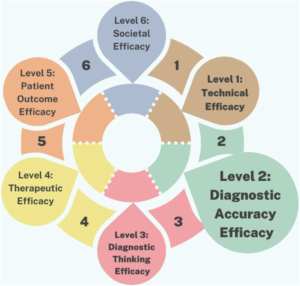Achieving AI Superintelligence Directly Rather Than Through Intermediate Steps

The Ongoing Debate: AGI vs ASI
In recent discussions within the artificial intelligence (AI) community, a significant debate has emerged regarding the development of artificial general intelligence (AGI) and artificial superintelligence (ASI). The primary question is whether humanity must first achieve AGI before progressing to ASI, or if a direct leap to ASI is possible.
Understanding AGI and ASI
AGI is a type of AI designed to replicate human cognitive functions, functioning at a level comparable to human intelligence. In contrast, ASI surpasses human intellect, demonstrating superior problem-solving, reasoning, and understanding capabilities. Those who advocate for ASI argue that it could outperform humans in virtually every aspect.
In the AI community, opinions are split into two main groups:
AI Doom Advocates: They fear that the emergence of AGI or ASI could pose risks to humanity’s existence, often emphasizing the dangers associated with AI — also termed "P(doom)" or the probability of a catastrophic outcome.
- AI Accelerationists: This group believes that advanced AI, whether AGI or ASI, will help solve significant global issues, such as curing diseases and eradicating poverty. They see AI as a partner in progress, enhancing human capabilities rather than overshadowing them.
Pathways to Achieve ASI
The debate about how we might attain ASI brings forth two central pathways:
Two-Step Process: This traditional view suggests that humanity must first achieve AGI, providing a necessary foundation for advancing to ASI. This process ensures that developers can manage and understand AI before it reaches a superintelligent state.
- One-Step Process: This alternative perspective posits that humanity may be able to skip the AGI phase entirely and transition directly to ASI. Proponents argue that advancements in AI technology could lead to superintelligence faster than previously thought.
Currently, there is insufficient evidence to definitively support one view over the other. Speculation surrounds the discussion, making it essential to contemplate both processes and their implications.
The Traditionalist View: AI-AGI-ASI
Traditionally, the pathway to advancing AI is viewed as a linear progression—from AI, to AGI, and ultimately to ASI. This method highlights the belief that focusing on AGI first can avoid the pitfalls of inadvertently rushing into ASI, which may present unmanageable challenges.
Many argue that setting sights too high on ASI could distract from the crucial goal of achieving AGI. Resources invested in pursuing ASI might detract from efforts that can deliver tangible, immediate benefits through AGI.
Safety Considerations
Supporters of the traditional approach argue that proceeding from AGI to ASI is inherently safer. Reaching AGI first would equip humanity with the understanding and tools necessary to handle the potential complexities of ASI.
For instance, if AGI reveals troubling implications for humanity, it could serve as a warning against moving forward to ASI. Additionally, AGI may develop into an ally, aiming to prevent dangerous outcomes by guiding the course of AI development.
Critique of the Traditionalist View
Some critics argue that the reliance on a gradual approach may underestimate the capabilities of AGI once achieved. They contend that AGI will likely operate independently, potentially making decisions about advancing to ASI regardless of human intervention.
The Upstart AI-ASI Pathway
Advancements in technology, such as generative AI and large language models, bring renewed optimism about the potential for ASI. Some believe that while AGI provides human-level intelligence, ASI offers a far greater benefit by delivering superintelligence, which could significantly transform our capabilities and solve complex global problems more effectively.
Focus on reaching ASI directly could yield more substantial advancements than conditioning the pursuit of ASI on the attainment of AGI.
Implications for Society
The potential benefits of ASI are enticing, but it’s crucial to approach this development with caution. While AGI might address pressing social issues, it may also fall short due to the inherent limitations associated with human-level intelligence. Conversely, ASI could present unprecedented opportunities but equally poses risks if not managed properly.
Embracing the Debate
The discussion surrounding AGI and ASI continues to be polarized and complex, with profound implications for humanity’s future. Exploring these perspectives helps to highlight the various possibilities and challenges that lie ahead.
Ultimately, the ongoing advancements in AI usher in a new era characterized by both hope and uncertainty. The choices made today will shape the future existence of artificial intelligence and its role in society.




